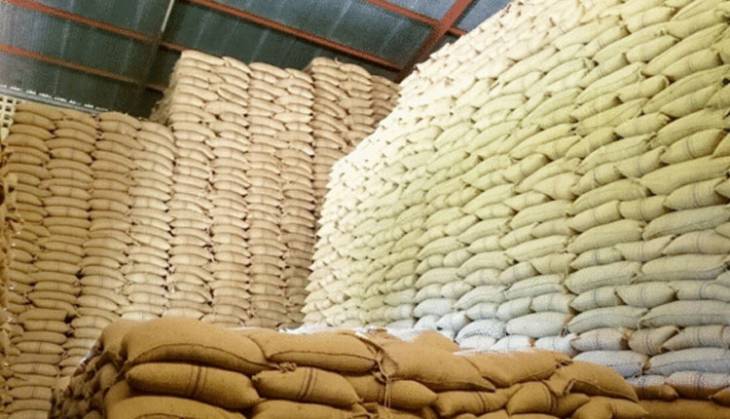Ballooning price of maize flour chokes shoppers

A steep rise in the cost of maize flour – a staple food in Kenya – pushed the Government yesterday to waive all levies, taxes and charges on imported maize for the next three months, starting from Friday.
Agriculture Cabinet Secretary Peter Munya made the far-reaching decision yesterday at the Namanga border post, from where he also directed that all raw materials used to make animal feed be imported duty free.
His decision is aimed at making flour prices more affordable by increasing supply of maize, thus improving consumers’ depressed purchasing power.
A 2-kg packet of flour has been retailing at between Sh200 and Sh220, with some outlets pricing some brands at a high of up to Sh250 per packet.
By the end of the 90-day importation window, farmers in some parts of the country are expected to have started harvesting their early crop, especially in the South Rift areas such as Sotik, where maize is grown on a large scale.
Even as Munya was making the announcement, Murang’a Governor Mwangi wa Iria was moving to court to compel the government to bring down the cost of maize flour. Today, he is expected to lead a protest march in Nairobi’s central business district, to compel the government to reduce flour prices. The march is expected to start at Uhuru Park.
Wa Iria, also the leader of Usawa Party, said his case was anchored in the constitutionally-protected citizens’ right to food.
Since the beginning of the year the cost of maize has been rising sharply, leading to a hue and cry by consumers who have to dig deeper into their pockets to afford the popular ugali meal that is considered a staple. At present, a 90-kilogramme bag of maize retails at about Sh6,000, up from between Sh3,500 and Sh4,000 in previous years.
“After a lengthy discussion with various Government agencies – Kenya Revenue Authority (KRA), Kenya Plant Health Inspectorate Service (KEPHIS), Kenya Bureau of Standards and Agriculture and Food Authority among others – we have decided to waive levies and charges on imported maize for the next three months,” Munya said during his visit of the Namanga border post where trucks carrying maize have been barred from entering the country before paying the necessary levies and charges.
Waiving of the levies, Munya confirmed, was arrived at as part of measures to reduce the cost of maize and related by-products mainly flour.
The Government has removed charges of raw materials especially yellow maize for animal feed production as part of reducing the cost of the feed.
An increase in the cost of animal feed has also dramatically increased the retail prices of eggs. It is also likely to impact on the cost of milk.
Raw materials
Food prices are a hot election campaigns issue, and Deputy President William Ruto, has already latched onto the issue to promise lower food prices if elected in August. The United Democratic Alliance presidential candidate hit out at the government, prompting his rival, Raila Odinga of Azimio-One Kenya Coalition Party to also pledge a reduction in cost of living if elected.
The August 9 General-Election is only 40 days away and the economy has become a major debating point between the two leading presidential contenders.
“Our mission as a government is to shield consumers against high prices of commodities,” said Munya, who has been promised the Agriculture docket in the next administration if Raila wins.
Munya is expected to gazette the waivers either today or tomorrow so that the new directive can take effect from Friday.
A spot check by People Daily indicated that lack of maize, coupled with high cost of fuel and low cash circulation in the economy, continue to frustrate citizen’s ability to afford decent meals. For instance, the cost of a kilo of flour processed at local posho mills has risen up by between Sh5 and Sh10 and is only Sh20 lower than some branded products.
In Murang’a County, some posho mills were selling a kilo of maize flour at Sh90. In Nakuru, 2-kg of dry maize was retailing at Sh200, while it costs Sh20 to mill the same. At Gakoromone, one of the major markets in Meru, a kilo of dry maize was being sold at Sh100.
In major markets within Nairobi, like Nyamakima and Kawangware, a 2-kg tin of dry maize was retailing at between Sh150 and Sh200. The average cost of milling is Sh10 per kilo. Kennedy Nyaga, chairman of the United Grain Millers Association, told People Daily that the price of dry maize had gone up tremendously over the past few months due to shortage of the commodity both locally and in the region.
“This will further injure the already depressed consumer purchasing power,” he warned. He expected the cost to rise further as supplies dwindle.
Major markets
National Treasury and Planning Cabinet Secretary Ukur Yatani on May 20, in a gazette notice permitted food value chains to import into the country 540,000 metric tonnes of non-GMO white maize by the first week of August.
Equivalent to six million bags of 90 kilogrammes, the maize will be imported from outside the East African Community because the region is equally suffering from decreased stocks due to prolonged drought.
However, even as Kenya grapples with high costs of maize flour, some countries are enjoying high food surplus.
According to the International Grains Council, in its May 27 Grain Market Report, forecast total Brazilian grains production in 2021-22 reached 128.4 million tonnes compared to the previous year’s total crop of 108.9 million tonnes.
Farmers in the South American country are reported to be struggling with limited storage due to the bumper harvest.
Going forward, however, the Ministry of Agriculture will have to improve distribution of fertiliser ahead of planting seasons.
Players in the agriculture value chain have over the years blamed delayed and poor distribution of fertiliser for the gradual reduction in acreage under food crops.











